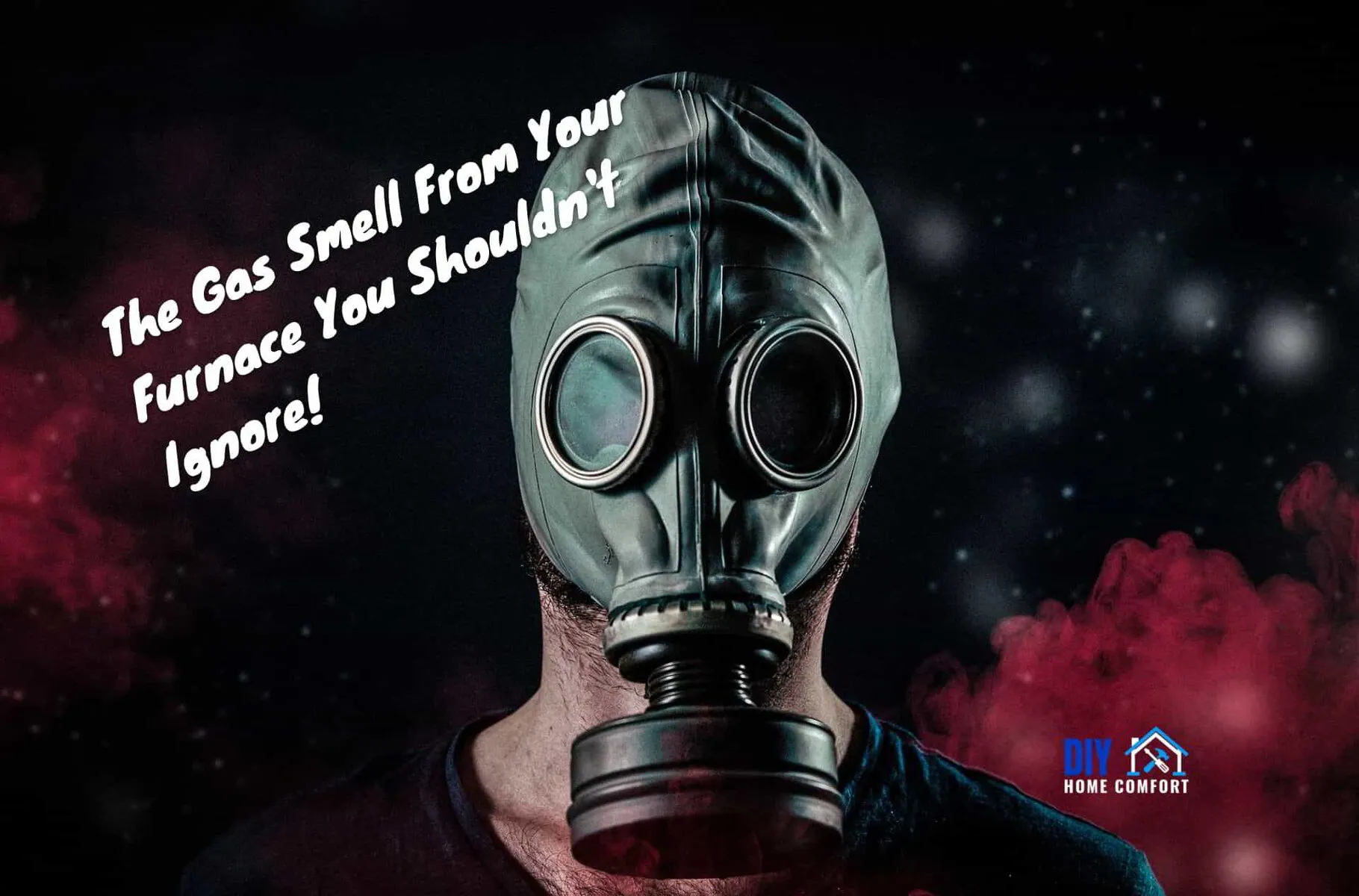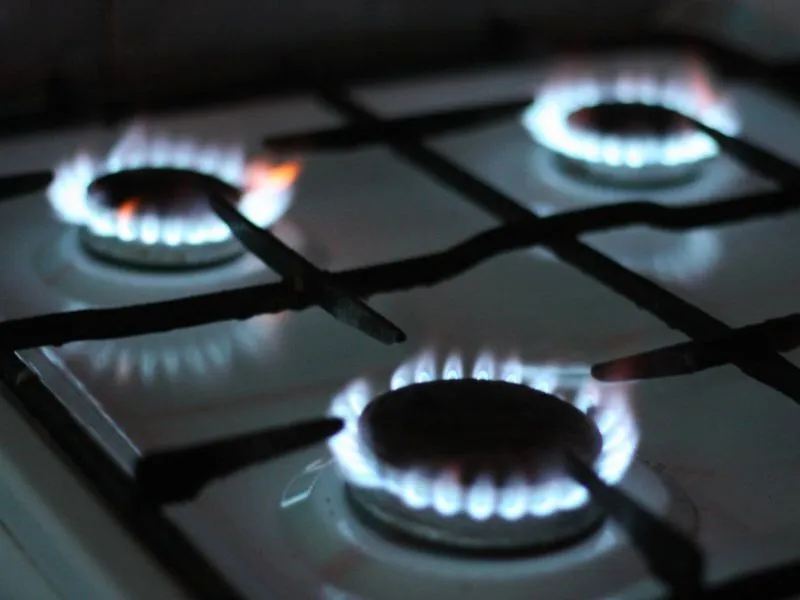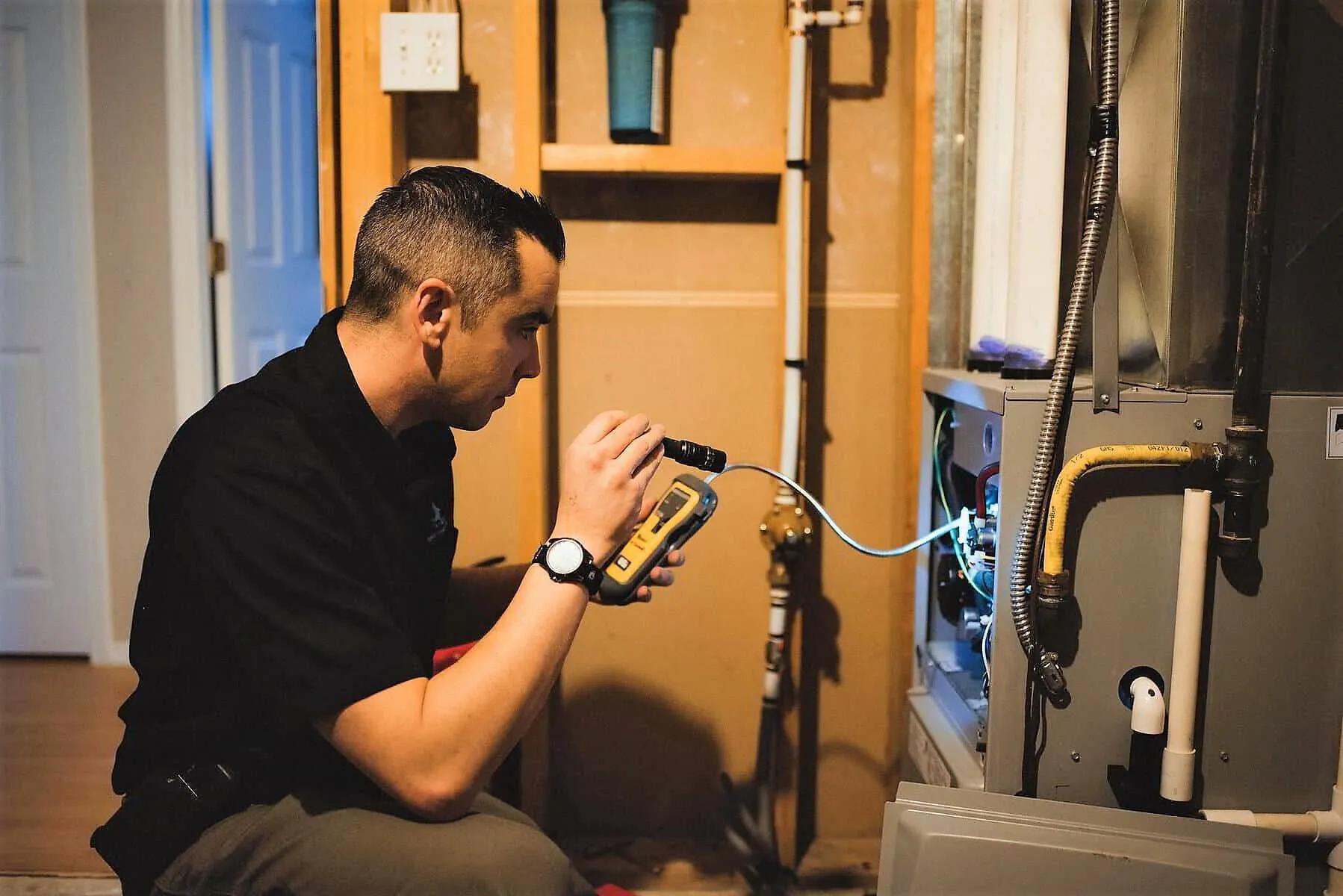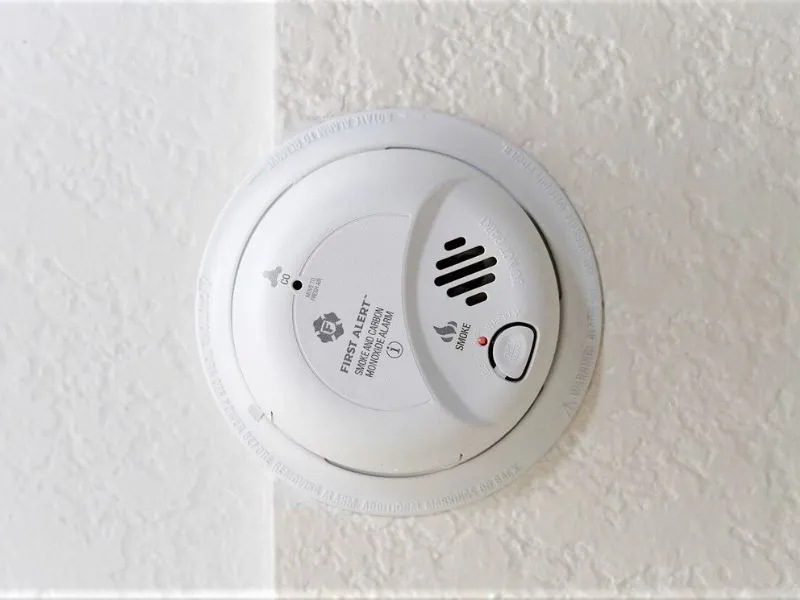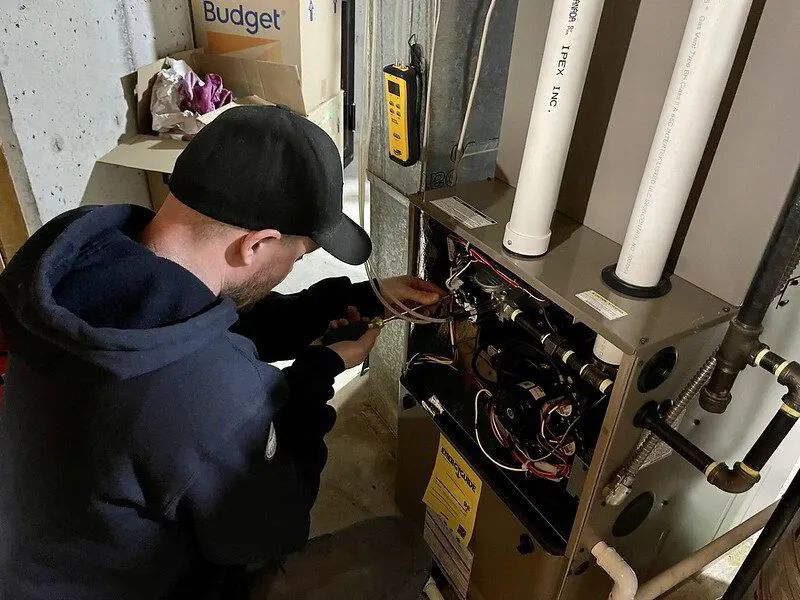The Gas Smell From Your Furnace You Shouldn't Ignore!
Residential furnaces are the most common type of home heating system found in North America.
Did you know that it's normal for gas furnaces sometimes to emit tiny amounts of gas when running?
However, you may have a problem if that smell becomes more potent and persistent.
Not all smells coming from your gas furnace are dangerous, and it's good to know what types of smells should trigger a phone call to your local HVAC service company.
📘 Key Takeaways
- Detecting Issues: While small amounts of gas emission can be normal, a strong, persistent gas smell near your furnace could indicate a serious problem, and immediate precautions should be taken.
- Mercaptan Alert: Natural gas is odorless, but the foul-smelling chemical mercaptan is added to make leak detection easier.
- Potential Causes: Cracked heat exchangers, back drifting of combustion gases, and leaks in gas pipes or valves are among the possible causes of furnace gas leaks.
- Other Odors: Certain smells from your HVAC system, such as rotten eggs or burning dust, may not be directly related to your furnace.
- Expert Advice: If you detect a gas smell, it's crucial to consult with a professional for a thorough inspection and necessary repairs.
🏠 Why Does Natural Gas Smell?
Did you know that natural gas actually doesn't have any odor at all!
Having such a flammable gas in a residential environment can prove to be quite dangerous.
Because of this, gas companies mix it with a chemical called mercaptan.
Mercaptan, also known as methanethiol, is a foul-smelling gaseous chemical that's added to natural gas.
Mercaptan acts as an odorant, so it's easier to detect to ensure leaks do not stay undetected for long.
Mercaptan is an organic gas that's composed of carbon, hydrogen and sulfur. It's the sulfur that you smell, and its odor resembles a rotten egg smell.
It's harmless to humans and animals and just serves as an early warning device. If you do smell it, it doesn't always mean you have a gas leak.
🏠 Do I Have A Gas Leak?
Let's start with the most obvious problem: smelling a gas leak.
It can be normal to smell gas near a furnace when you first start it up, especially at the start of the heating season.
The problem is when it's stronger further away from your furnace.
If the smell of natural gas doesn't subside, you will likely have a gas leak, and you need to take immediate precautions to keep your family safe.
Here is where you need to make a judgment call. It's best to err on the side of caution and take evasive action.
🧨 If you feel like your house is about to blow up, leave your home immediately and call the local fire department.
If not, and you feel confident to take action, turn off your gas furnace and the gas valve located near the furnace.
Open a few windows on the way out of your home to help with cross ventilation.
Once outside, call 911 for assistance. You could also call your local gas company to come and check out the issue.
Once the problem has been identified, it's time to call your local HVAC company to come out and fix the issue.
Here are a few possible causes of furnace gas leaks:
🔥 Cracked Heat Exchanger
The heat exchanger in your furnace is responsible for heating the air in your home.
Your furnace works by burning natural gas within the combustion chamber in the heat exchanger.
Air is heated by flowing over the heat exchanger and into your home's ventilation system warming your home.
Heat exchangers can become cracked from overheating, causing the combustion gases to mix with the heated air and flow into the rest of your home.
Cracked heat exchangers are dangerous as they can also release carbon monoxide into your home.
If you suspect a cracked heat exchanger, seek help from an HVAC technician before using your furnace again.
Other signs of a cracked heat exchanger:
- Soot accumulating inside or on your furnace
- Yellow burner flames instead of blue ones
- Obvious cracks and corrosion
- Strange smells
- Audible sounds such as rattling, popping and banging noises
- Family members have flu-like symptoms from CO poisoning.
🔥 Back Drifting Furnace
Back drifting occurs when these combustion gases leak from your furnace and into your home.
These gases are meant to exit your home via a furnace exhaust flue. This can be caused by a blockage such as a leaky, clogged or disconnected flue or venting system.
Also, running too many exhaust fans in your home can cause a negative pressure which may cause back drifting.
🔥 Gas Pipe or Valve Leak
This is an obvious one. Natural gas is fed into your home via a series of lines and controlled by valves.
If any one of these starts to leak, you will notice a strong gas smell in your home, especially near these gas pipes and valves.
If you hear a hissing sound and the smell is almost overpowering, you have a major leak. Follow the safety guidelines above and get out of your home immediately.
If you know the leak is inside your home, you can stop it by switching off the main gas valve, which is located outside of your home.
Gas lines and valves can leak due to age, improper installation and accidental damage.
Normal Smells From Your Furnace
The average gas furnace cycle on a regular cold in winter is about 10 to 15 minutes.
If it's particularly cold outside, your gas furnace may need to run twice to three times per hour to maintain the desired temperature.
When your furnace first kicks on and ignites, it's normal to smell gas each time. If you are close to the furnace, you may smell an insignificant amount of mercaptan.
This normally passes very quickly. If your furnace is short cycling because of other issues, this can be a problem.
Certain smells coming from your HVAC system might not be the furnace itself.
Garbage disposals and trash could be a source of that horrible rotten egg smell. Especially if there are rotten eggs in there.
Ensure bins and other items ready for disposal are not kept anywhere near your home's HVAC system.
Burning dust is another all-time favorite you can smell in your home, especially after turning on your natural gas furnace for the first time after summer.
This will disappear quickly as it's burnt off within your furnace.
☠️ A Point on Carbon Monoxide
As an HVAC professional, I would like to dispel this common misconception about carbon monoxide detectors.
A carbon monoxide detector cannot detect gas leaks.
You can fit a natural gas leak detector into your home's heating and cooling system if this is something that worries you greatly.
Carbon monoxide detectors can only detect carbon monoxide (CO). CO is produced due to an incomplete burn due to various malfunctions within your furnace.
Most residential building codes in the US and Canada require that a CO detector be installed near natural gas furnaces.
High CO levels can lead to carbon monoxide poisoning, which can also be fatal if left untreated.
🛠️ Schedule Routine Maintenance
If anyone in your family notices smells like gas, then it's time to schedule a furnace inspection.
We know many homeowners run their HVAC equipment to failure before organizing furnace repairs, but we always recommend a yearly furnace inspection.
During furnace service, your local HVAC technician will do a thorough inspection of your furnace, give it a good clean, and ensure it's working properly and that natural gas is being combusted and exhausted properly.
Finally!
Some smells from your furnace are perfectly normal and nothing to be too worried about.
If a particular smell lingers longer than it should, this most likely indicates a problem with your furnace.
When this happens, the best course of action is to call your local HVAC company for that all-important furnace repair and tune-up before it gets too cold.
Learn more about your home's heating through our other homeowner articles!
Scott Harding
Scott is the main author of DIY Home Comfort. He's also an experienced HVAC technician that enjoys home renovation and spending time with his family. You can find out more about him here.
